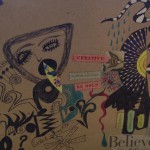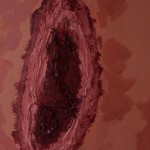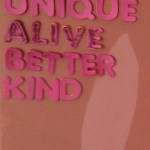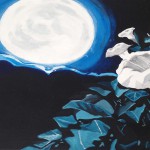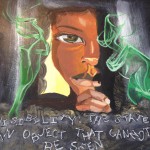By Carlos D. Williamson
An art gallery on Chicago’s Northwest Side that typically showcases the work of survivors of sexual abuse and rape is helping support a new cause.
The Awakenings Foundation Center and Gallery is featuring an exhibit that shows the artwork of survivors of human trafficking. While most survivors of trafficking have been the victims of sexual abuse, others have been subjected to slave labor. Through art-therapy sessions and workshops, these survivors channeled their pain into powerful, abstract imagery and expression.
“Art therapy can be very, very powerful for survivors of anything,” said Laura Kinter, marketing director at the Awakenings Foundation. “We all have something to heal from, and it allows you to express yourself in a way that isn’t just talking, isn’t writing about something. It takes something out of you.”
To raise awareness about human trafficking in Chicago, the gallery, the Cook County Human Trafficking Task Force and STOP-IT, a Salvation Army program that works with trafficked survivors, teamed up to present the “Art of Healing.” The exhibit opened on Jan. 11, National Human Trafficking Awareness Day, and will continue through Feb. 29 at 4001 N. Ravenswood Ave.
Since January is also National Human Trafficking Awareness Month, Kinter said the subject is timely and needs to be talked about more frequently, even if it’s difficult.
“Some of [the art] is very beautiful. Some of it’s really hard to look at,” Kinter said. “And some people ask us, ‘Why do you choose such difficult artwork?’ Well, it’s not what we choose, it’s what comes out of a survivor.”
The artwork is a healthy form of expression for survivors, and such activities encourage creativity and enable them to find effective methods of healing, said Kristina Sundermann, a board-certified art therapist and licensed clinical professional counselor.
“When you start using art materials, music, movement, dance, any of those things, you’re starting to engage more of that emotional feeling side of the brain, the right side of the brain,” Sundermann said. “In order to really heal that experience, you have to go into the other side — the emotional feeling — and be able to understand what was damaged and be able to heal that piece.”
But before Sundermann teamed up with STOP-IT to conduct workshops, she wanted to be sure that participants had already gone “through a good deal of counseling specifically related to trauma,” she said. Sundermann didn’t want the artists to be held back by their traumatic past.
The exhibition features 16 abstract portraits and a lunchbox adorned with quaint, colorful imagery. Through their artwork, the survivors convey mostly anguish, distress and perseverance. And the triptych titled “Healing Process” by Dia shows just that: The first panel is a painting of an open gash; in the second, the wound is bandaged, and the last combines image and text. The wound is less visible and almost pale in color. And the text reads “I Am ../ Strong/ Brave/ Unique/ Alive/ Better/ Kind/ Healthy/ Changed.”
To avoid revealing their identities, the survivors signed their paintings with pseudonyms. But despite the progress they’ve made by creating their work, Summar Ghias, a task force coordinator at STOP-IT, said healing isn’t always a linear process.
“Trauma is complicated, and the way that it manifests isn’t necessarily like, ‘I feel good now,’ ” Ghias said. “It’s definitely a process where you’ll have to dig and you’ll have bad days. When we work with our survivors, we want to give them the mental health support that they need.”



